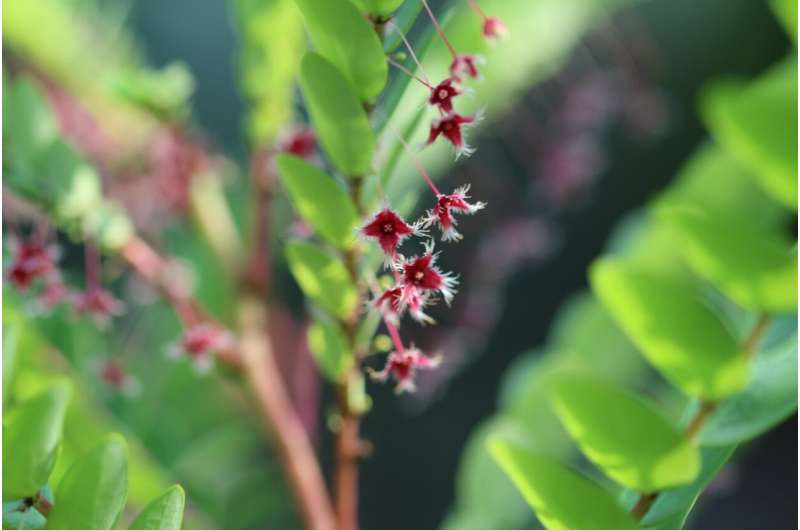New classification for tropical plant group Phyllanthus

The tropical plant genus Phyllanthus has been the subject of debate in the taxonomic world for years. About fifteen years ago it became clear that the genus with nearly 900 plant species, contains plants that are considered separate groups. "Many subgroups were created to better distinguish the diversity of the large number of species," according to Ph.D. candidate Roderick Bouman, who conducted the research. "But some groupings that were created based on similar appearances turned out not to be directly related." Since previous studies had only investigated a small portion of all Phyllanthus species, this prompted to take a closer look at the entire genus. This resulted in Bouman's doctoral research at the Hortus botanicus in Leiden.
Leaves from botanical gardens
For three years Bouman worked on a new subgeneric classification for Phyllanthus. He used DNA techniques to classify the species. For this, he used leaf material from botanical gardens around the world. He also collected leaf samples during fieldwork in China and Hong Kong. Bouman looked at certain pieces of DNA—so-called markers—to determine the kinship of species. Bouman commented, "I wanted to know how Phyllanthus evolved and how that relates to the classification of all subgroups. My goal was to come up with a new classification of Phyllanthus that solves the problem of the mix with other plant genera."
During his research, it became clear that several theories turned out to be correct, but there was also a lot wrong with the current classification of Phyllanthus. For example, a few plants from South America were classified with species from Asia, based on pollen. Bouman's DNA research shows that the species are, however, only distant relatives. The external characteristics that led to the classical way of organizing, probably developed independently of each other. According to Bouman, this is an indication of convergent evolution, in which similar conditions have resulted in similar morphological adaptations in species that are not related to each other. "It is difficult to determine at first sight," said Bouman. "A lot of patterns suddenly got a different context. As a result, it appeared that some flower characteristics, such as the number of stamens or the pollen, have sometimes evolved independently."
Mapping dispersal
Bouman's doctoral research paves the way for a thorough reworking of this enormous plant group. "We will use the results from this study to arrive at a new classification of Phyllanthus. We also look at other aspects of the evolution of these plants, such as their dispersal history. Phyllanthus is found in all tropics and subtropics and we are trying to reconstruct where the group may have come from and how it has spread to other regions."
More information: Roderick W. Bouman et al. Molecular phylogenetics of Phyllanthus sensu lato (Phyllanthaceae): Towards coherent monophyletic taxa, TAXON (2020). DOI: 10.1002/tax.12424
Provided by Leiden University


















